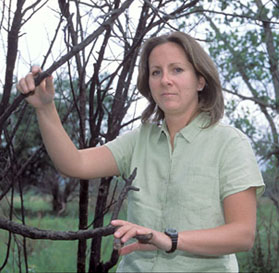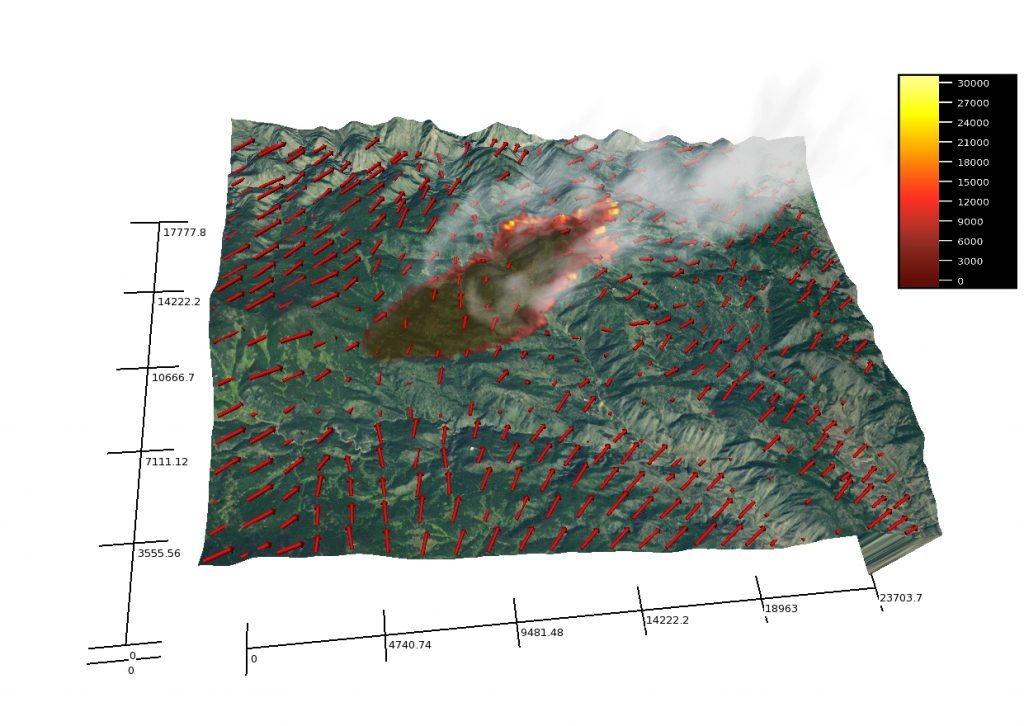 In this video from SC16, Janice Coen from NCAR presents: Advances and Challenges in Wildland Fire Monitoring and Prediction.
In this video from SC16, Janice Coen from NCAR presents: Advances and Challenges in Wildland Fire Monitoring and Prediction.
The culture of fire suppression reveres tradition, standardized training, and organizational hierarchy. Yet, the past two decades have seen the infusion of technology that has transformed the understanding, observation, and prediction of wildland fires and their behavior, as well as provided a much greater appreciation of its frequency, occurrence, and attribution in a global context. These advances arose through cross fertilization from numerical weather prediction – reflecting advances in numerical weather prediction, data assimilation, and high performance computing – as well as new remote sensing instrumentation and platforms from satellite to unmanned aerial systems, mathematical algorithms, computer science, ecology, and the access to and interpretation of vast datasets on fires, fuels, and weather.
This wave of technology has brought many goals within sight – rapid fire detection, nearly ubiquitous monitoring, and recognition that much of the distinctive characteristics of fire events are reproducible and perhaps predictable in real time. Concurrently, these more complex innovations raise new challenges, as only marginal improvement may be generated by further refinements in algorithms and model resolution; legal and safety considerations limit observations of dangerous phenomena and introduction of new technology; predictions face limits to predictability; and the complexity of identifying and forecasting the statistically rare megafire event among the 40,000 – 100,000 yearly wildfire events in the U.S., of which only a few percent will grow beyond a hundred hectares.
This talk will highlight current research in integrated weather – wildland fire computational modeling, fire detection and observation, and their application to understanding and prediction.

Coupled Atmospher-Wildland Fire Environment model simulation of the 2012 High Park Fire near Fort Collins, CO.
Dr. Janice Coen is a Project Scientist at the National Center for Atmospheric Research in Boulder, Colorado. She received a B.S. in Engineering Physics from Grove City College and an M.S. and Ph.D. from the Department of Geophysical Sciences at the University of Chicago.
She is currently an Associate Editor for the International Journal of Wildland Fire and a member of the Editorial Board of Environmental Modelling & Software and has served has served as a member of the Board of Directors of the International Association of Wildland Fire and on the Colorado Aerial Firefighting Center of Excellence Vision/Focus Subcommittee, the Office of the Federal Coordinator for Meteorology National Wildland Fire Weather Needs Assessment Joint Action Group, and interagency Fire Research Coordination Council.
She investigates wildland fire behavior and its interaction with weather using computer simulation models and by analyzing infrared imagery of wildland fires. She has developed two coupled numerical weather prediction – wildland fire behavior models that have become widespread in the research community and transformed the way people interpret fire behavior.
Her current work studies the unfolding of large wildland fire events, distilling the understanding this new class of models has provided to improve firefighter safety, drought and fuel mitigation impacts on fire behavior, assimilation of satellite active fire detection data, and the use of coupled weather-fire behavior models as forecasting tools.



